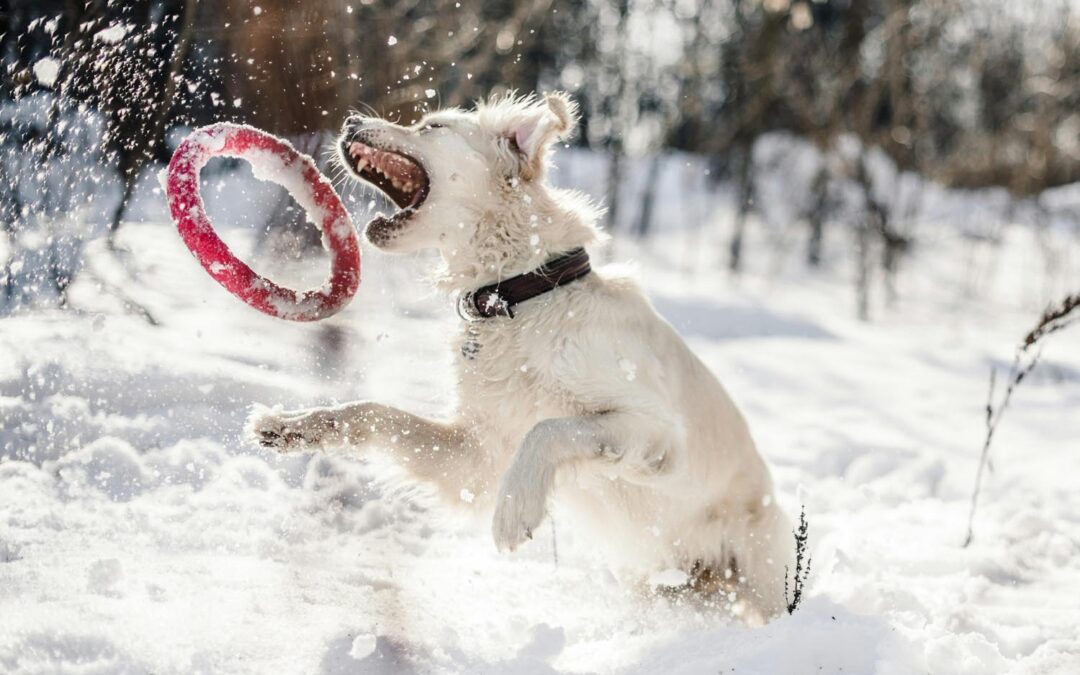As the temperature drops in Oakdale, our pets feel the change just as much as we do. Have you ever noticed your dog’s paws becoming rough or dry after a winter walk, or their coat looking less shiny than usual? Winter brings a unique set of challenges for pets, from icy sidewalks to cold winds, all of which can take a toll on their sensitive skin and coat. But don’t worry—there are simple steps you can take to ensure your furry friend stays comfortable and healthy throughout the season.
Let’s dive into some effective ways to care for your pet’s skin and coat this winter. With just a little extra attention, you can help prevent issues like cracked paw pads and a dry, irritated coat, so your pet can enjoy winter walks as much as you do.
The Importance of Winter Pet Care
Cold weather can be tough on your pet’s paws and skin. Snow, ice, and the chemicals used to de-ice sidewalks are all culprits that can cause irritation and discomfort. Just like we reach for extra moisturizers during winter, pets need extra care to keep their paw pads from cracking and their coats from drying out.
In Oakdale, where winters can be particularly harsh, paying attention to your pet’s skin care is essential to preventing unnecessary discomfort. Your dog’s paws and coat serve as their natural protection, but they can still benefit from added care during the colder months. Let’s explore how you can protect your pet from the common effects of cold weather.
Protecting Your Pet’s Paws
Winter weather can be tough on your dog’s sensitive paw pads, with cold temperatures, icy surfaces, and de-icing chemicals leading to discomfort, dryness, and even burns. Protecting your pet’s paws from these elements is essential to keeping them comfortable and preventing health issues.
- Avoiding Paw Pad Irritation
During winter walks, icy sidewalks and de-icing chemicals can cause your pet’s paw pads to dry out, crack, or become irritated. Wiping your dog’s paws after each walk, especially between the toes, removes harmful salts and chemicals. Regularly checking for cuts or injuries also helps prevent discomfort and infection.
- Using Paw Balm and Booties
Applying a moisturizing paw balm before walks creates a protective layer that helps prevent dryness and cracking. Natural ingredients like shea butter or coconut oil keep paw pads soft, while balms protect from chemicals and cold surfaces. Booties offer additional protection by shielding paws from ice, snow, and salt, while also providing warmth and better traction on slippery surfaces. For high-quality paw balms, check out the products available in our online pharmacy.
Keeping Your Pet’s Coat Healthy
Winter can leave your pet’s coat dry, brittle, and prone to irritation due to cold, dry air and indoor heating. Proper coat care helps prevent discomfort, shedding, and skin problems. Regular moisturizing and grooming are key to maintaining a healthy, soft coat throughout the colder months.
- Moisturizing Your Pet’s Coat
Moisturizing your pet’s coat is essential during winter to prevent it from becoming dry and brittle. Using pet-specific shampoos and conditioners with natural ingredients like oatmeal and aloe vera helps soothe and hydrate your pet’s skin and coat. Avoid human shampoos, as they strip natural oils. Regular, but not too frequent, baths (about once a month) can keep your pet’s coat hydrated without over-drying. Consider adding omega-3 fatty acids to their diet for enhanced coat health.
- Preventing Ice Balls in Fur
For pets with long or thick fur, snow can stick to their coat and form ice balls, causing discomfort and matting. Keeping your pet’s fur trimmed, especially around the paws and belly, helps reduce snow buildup. Daily brushing can prevent tangles and ice accumulation. If ice balls form, remove them gently by warming the area with a towel or lukewarm water, then dry your pet thoroughly to avoid irritation. Handling ice removal carefully will ensure your pet stays comfortable during winter walks.
With a little extra care, your pet’s coat can stay healthy and vibrant all winter long. Moisturizing regularly, using pet-safe grooming products, and managing ice balls in their fur are key to preventing winter-related issues like dry skin, matting, and discomfort. If you’re unsure which products are best for your pet’s specific needs, you can always consult with our veterinarians at Homey Gnome Veterinary Clinic.
General Winter Safety Tips
Winter weather in Oakdale can pose several risks to your pet’s health, including frostbite and hypothermia. It’s essential to limit outdoor time during extreme cold, keep pets warm with jackets or sweaters, and dry them off after outdoor activities to prevent discomfort and health issues. Consider these safety tips:
- Keep Your Pet Warm and Safe
Cold weather can be dangerous, particularly for small or short-coated pets. Limiting time outside during cold spells helps prevent frostbite and hypothermia. Watch for signs of discomfort like shivering or paw-lifting, and always ensure your pet is warm and dry after being outdoors.
- Limit Time Outside in Extreme Cold
Short-coated, smaller, or older pets lose body heat quickly and may need shorter outdoor sessions. Break outdoor time into smaller segments, and consider indoor play to keep your pet active without exposing them to harsh conditions. Monitor for signs that your pet is too cold, such as reluctance to walk or shivering.
- Use Jackets or Sweaters for Extra Warmth
Pets with short fur or lower cold tolerance benefit from wearing jackets or sweaters. These provide extra insulation and protect against freezing temperatures. Ensure the jacket or sweater fits properly, allowing for freedom of movement.
- Dry Your Pet Off After Outdoor Activities
After time outside, dry your pet thoroughly with a towel, paying attention to paws, belly, and ears. Removing ice and snow prevents irritation and helps maintain body heat. For thicker coats, consider using a blow dryer on a low, cool setting to fully dry them.
Keep Your Pet Happy and Healthy This Winter
Winter care for your pet is simple with the right steps. Use paw balm, booties, and moisturizing shampoo to protect your pet’s paws and coat. If your pet shows signs of irritation or dryness, schedule a winter wellness check at Homey Gnome Veterinary Clinic.
FAQs: Winter Pet Care
- How can I tell if my pet’s paws are too cold?
If your dog is lifting their paws frequently, limping, or stopping to lick their feet during walks, they might be feeling discomfort from the cold. Other signs include shivering or reluctance to walk on cold surfaces. Booties can help prevent this discomfort, or you can apply paw balm to create a protective layer.
- How often should I apply paw balm?
You can apply paw balm before and after walks, especially during cold weather. For pets with sensitive paws or those walking on salted sidewalks, it’s a good idea to apply after cleaning their paws when you return home.
- Can ice balls harm my pet’s fur?
Yes, ice balls can cause discomfort and lead to matting, which can pull on the skin. They can also cause your pet’s fur to become tangled. Regular brushing and trimming fur, especially around the paws, can help prevent ice from clinging.
- Is it safe to bathe my pet during winter?
Yes, it’s safe to bathe your pet in the winter, but be sure to use a moisturizing shampoo that won’t strip their skin of natural oils. Avoid frequent baths, as they can dry out the skin. Once a month is typically sufficient during the colder months.
- What should I do if my dog shows signs of frostbite?
If you suspect frostbite—such as pale or discolored skin on the paws, ears, or tail—get your pet inside immediately and warm them with blankets. Don’t rub or apply heat directly. Contact your veterinarian as soon as possible to evaluate the situation.
Image credit: Unsplash


